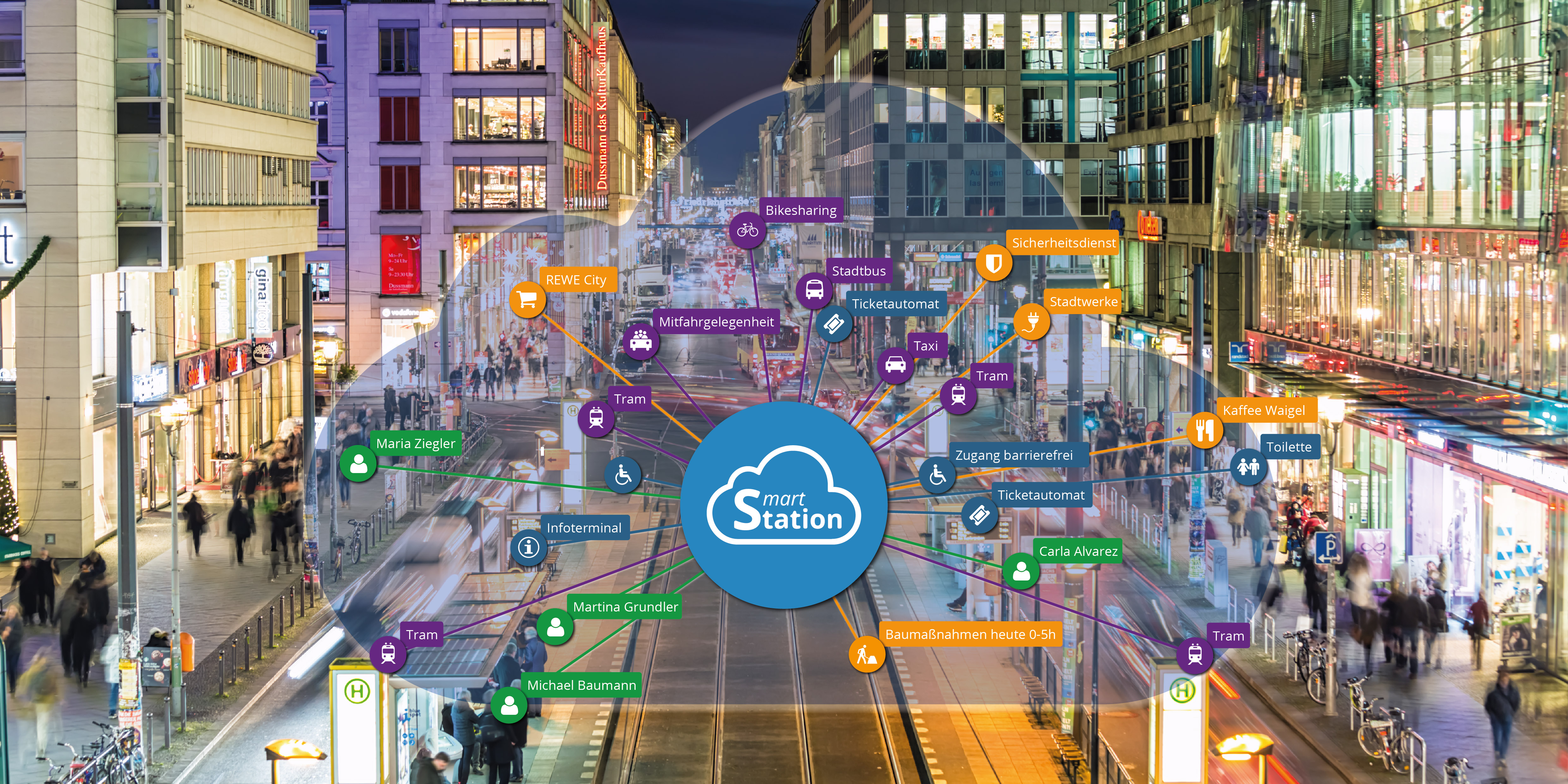A research project in Karlsruhe shows the role of networked stations in multimodal mobility. It’s about nothing more than the smart stop as the pivotal point in public transport in the smart mobility network of tomorrow. The research and development project “smartStation – The stop as a gateway to multimodal mobility” (FE-No. 70.918/2016) commissioned by the Federal Ministry of Transport and Digital Infrastructure in Germany addressed this question.
Together with raumobil GmbH, the PTV Group developed ideas and visions on how to further develop today’s analogue stops into digital hubs. The PTV Group looks at transport and logistics in a holistic way to make mobility sustainable for the future. As the world’s market leader, the company has developed intelligent software solutions for transport logistics, transport planning and traffic management. This helps cities, businesses and individuals save time and money, make roads safer and minimise environmental impact.
What demands does an intelligent stop have?
During the one-and-a-half year research phase, the project team initially investigated the question of what demands are placed on an intelligent stop or station. For the user, a stop becomes smart when it can offer personalised information and services tailored to the user,” says Annette Kindl, project manager from the PTV Research Team. “It is therefore necessary to link mobility offers, services and infrastructure elements.”
For this purpose, station-specific and superordinate data and information must be intelligently networked. This means, for example, that previous analogue elements such as information terminals, escalators, elevators or lockers must also be enabled to communicate. All this data is integrated into the smartStation network in real time via a standardised protocol,” explains Annette Kindl. With the help of an app, the user can then log into the so-called infosphere, i. e. the immediate environment of a smartStation, and access this information and services. All means of transport can be used intelligently, energy-efficiently, cost-effectively and comfortably “.
In order to assess the practicality and feasibility of the smartStation, the project team developed and analyzed concrete application examples. For example, an app could display travel alternatives such as free car-sharing cars or car-sharing offers to a commuter who has missed his connection due to delays in public transport as soon as he arrives at the smartStation. Basically, the idea of the smartStation network opens up the possibility to integrate infrastructure, services and offers of all kinds. Information on elevator problems or safe places to stay for children in the event of disruptions to local transport.
It is crucial that communication between the various players at the stations is considerably facilitated, opening up new opportunities.” In addition to the manifold opportunities offered by the digitisation of bus stops, the project “smartStation – The bus stop as an entry point into multimodal mobility” has shown the challenges that accompany it. There are many different standards, platforms and digital services that need to be technically interconnected. Numerous stakeholders from a wide range of different areas have to be involved. Nevertheless, Annette Kindl is convinced that the intelligent stop will come: “The smartStation is only the next logical step in the advancing world of digital mobility. With our research project, we have made initial assessments and started the discourse on the digitisation of stations. Now it is time to continue with the relevant actors, to design the idea conceptually and to put it into practice within the framework of pilot projects “.
Post a Comment
You must be logged in to post a comment.






















